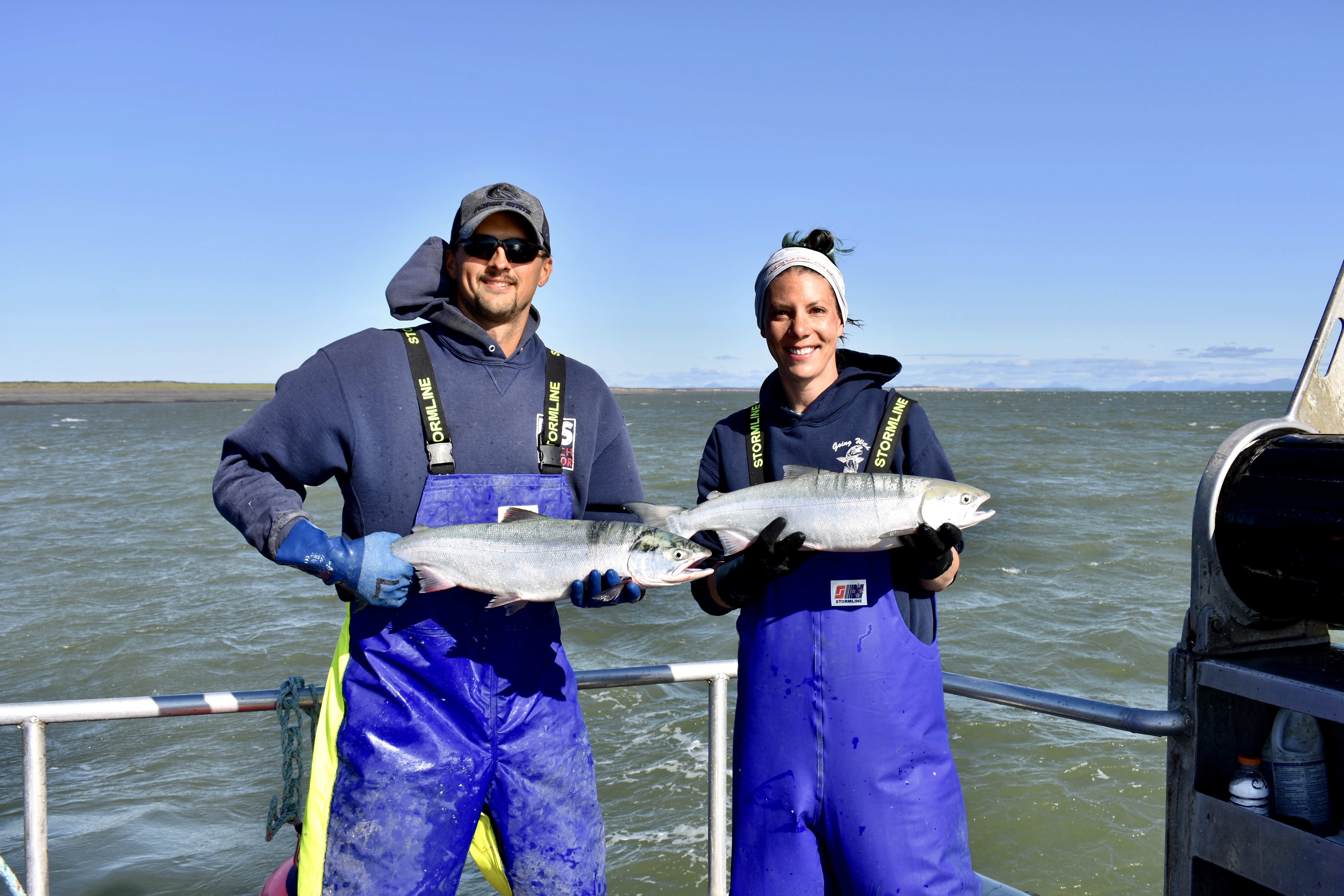When covid hit Alaska, some of the changes to the seafood industry were immediate for those in the throes of seasons that were underway. Cod and other winter-spring fisheries suffered immediate blows to product flow while others like the salmon industry had time to construct industry protocols before the onslaught of fish returned to the nearshore waters.
While the pandemic disrupted the harvest and processing sectors of the fishing industry, the ripples it sent to consumers can’t hurt seafood in the long run.
“The milk dumping and the closing of slaughterhouses prompted the question: ‘Where does my food come from?’” says Garret Evridge, a fisheries economist with McKinley Research, formerly McDowell Group, in Anchorage.
As for the product forms, shelf-stable items like frozen fish sticks made from pollock and canned salmon found high demand Meanwhile, markets for other species such as herring, blackcod, red king crab and groundfish fell subject to dynamics that usurped the pandemic. Fishermen who’d done the groundwork in self-marketing ventures before covid hit found high demand and substantially higher prices for their value-added products.
“Covid came along, and the market just skyrocketed,” says Evridge.
Salmon
“Going into the season, even before covid, the canned salmon market was hot,” says Evridge.
By March the world had revved into the full swing of hoarding toilet paper, staple foods and other commodities.
In the fishery, establishing protocols for the upcoming season began at the community level to prevent spreading of the virus as seasonal, transient processing crews began assembling in California and elsewhere along the West Coast. Community action plans varied, and many fishermen found themselves living aboard, offshore from seaports and other areas of possible close contact.
In Bristol Bay, the onslaught of sockeyes arrived whether communities and processing crews were ready or not. Though major fish plants had strict protocols in place, there were some glitches that translated to catch limits to the fleet. An unfortunate side effect of a lot of fish in a short amount of time, a “compression of the harvest,” as managers call it, is that the majority of sockeyes went to market in frozen H & G form where in other years processors have set up additional value added operations in the plants.
Canned salmon saw high demand, as did many frozen products. Base prices from major processor started at 70 cents with incentives for refrigeration and bleeding that put ex-vessel averages above 90 cents.
Though the fleet was hopeful of retroactive price adjustments, depending on profits from the processors and their upline distributors, self-marketers like Grant Niver, saw a huge leap in demand by customers wanting to buy sockeye fillets from the family company, Surrender Salmon.
Niver began operating the business in Minneapolis, Minn., in 2013, and sales have doubled since then. Niver says orders for the salmon, which are packaged in individual portions, account for 10 percent of their Bristol Bay catch.
“We get a lot of feedback about the convenience of our salmon,” says Niver. “And also the ease of having it delivered to their front door. We were able to bring the world’s best salmon to people’s homes during a time when they were trying to avoid trips to the grocery store.”
Pollock
With the widespread closure of restaurants across the United States came a surge in sales of shelf-stable or frozen seafood entrees. Alaska single frozen pollock fillets had already been enjoying widespread success in domestic markets and in Europe, but when protocols for home-schooling and working from home fell into place the season of fish sticks ensued. The beauty of the fish sticks, according to the marketing folks at Genuine Alaska Pollock Producers, in Seattle, was that consumers could depend on a reliable source of protein that was easy to cook. As it turned out, an appreciable sector of the country was not familiar with cooking their own meals, but they could manage to toss the fish sticks onto a pan, set their ovens for 425 degrees and turn out a great meal.
Geoduck
For Alaska’s geoduck divers the pandemic’s patterns actually provided perfect timing in Chinese markets. When restaurants initially closed down in March and April, the geoducks were testing high for PSP. When restaurants reopened in summer, Chinese buyers needed product, and the fleet went fishing.
Though a summer harvest was unprecedented in the history of the fishery, the PSP levels were low, and divers nearly harvested the entire GHL of 700,000 pounds.
Halibut
Halibut longliners left 31 percent of the allocated 11.81 million-pound IFQ harvest swimming in the ocean for 2020, which was close to the same amount of uncaught quota in 2019. Declining biomass and lower allocations in poundage per IFQ holder had driven ex-vessel prices had driven up ex-vessel prices in years past; however, it appears that with the overall shortage of halibut consumers have switched to substitute species.
The good news for halibut is that when covid crimped the pipeline to restaurants, the retail market absorbed the volume and the expectations are that the 2021 season will begin with scant frozen holdover inventories.







